Is this a Blue Acara?
If you found working out if you had a Green Terror or a Gold Saum, you're in for an even tougher journey with this one, and to be honest we at Amdinoacara.com struggle with this.'
We are not going to go into if you have Andinoacara pulcher (Blue Acara) or one of cichlids from the A. pulcher complex.
What we are aiming to show you here are the differences between a Blue Acara, a Gold/Orange Saum and a Hybrid of the two species, which we have called Blue Acara Terror.
Is this a Green Terror or a Gold Saum?
The Blue Acara and the Orange Saum are related, and are both Andinoacara (hence why we are talking about them on this website) they are genetically similar and different at the same, these two fishes are commonly available, and if you check out their profile pages you will see very different.
Attitudes
Andinoacara pulcher and its closer relatives are evenly tempered and on the whole a more docile cichlid, in comparision to its more distance relatives in the A. rivulatus complex, and in this instance Orange Saum.
Andinoacara rivulatus have much more aggressive attitude and can be harder to house for the lesser experienced cichlid keeper.
The Physical differences
As well as a difference in attitude Andinoacara rivulatus is a much bigger cichlid, attaining an average aduld size of 12"/30cm, where as the Andinoacara pulcher 'types' tend to be much smaller only attending half that size (6"/15cm).
The Seams/Saums
The Orange Saum, as it name suggests has (in most cases) yellow, orange or red seam to its dorsal and caudal fins, Andinoacara rivulatus is also found with white seams, as you seen in the photos below.
The Blue Acara types have a coloured seam, which is either orange or white, on their dorsal fin. It is not as thick as that of Andinoacara rivulatus. They also lack the seam on their caudal (tail) fin.
Andinoacara rivulatus - White Saum
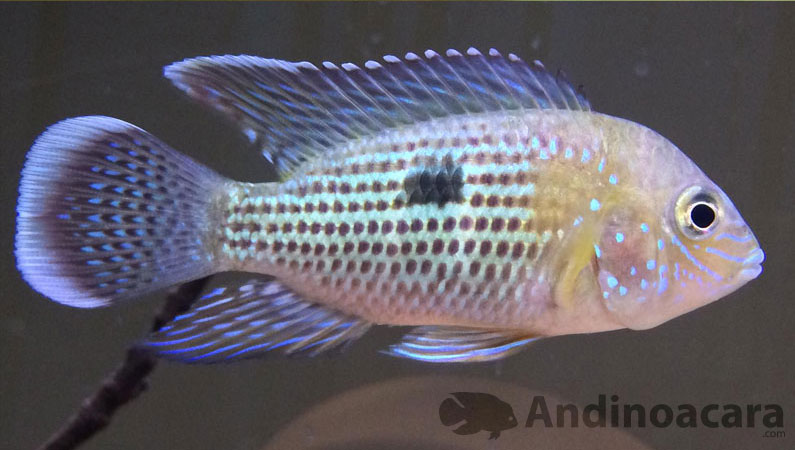
thick white seams to the caudal (tail) fin, and the dorsal fin
Andinoacara rivulatus - Orange Saum

thick Orange seams to the caudal (tail) fin, and the dorsal fin
Andinoacara pulcher - Blue acara
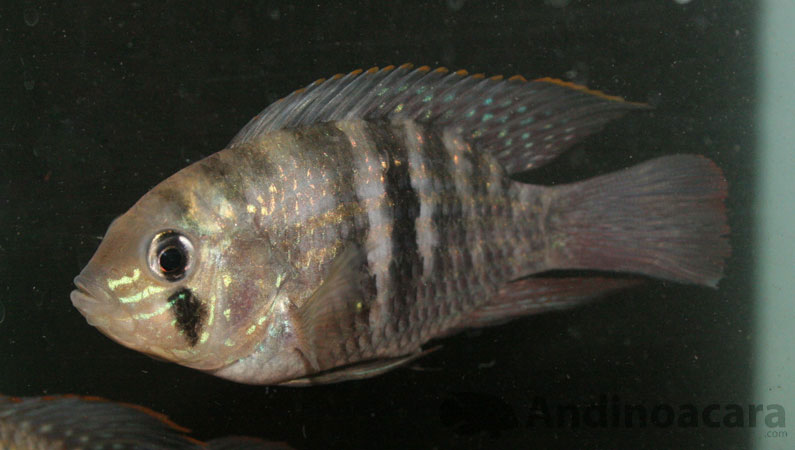
thin orange dorsal seam
Scales
Andinoacara rivulatus - Orange/Gold/White Saum
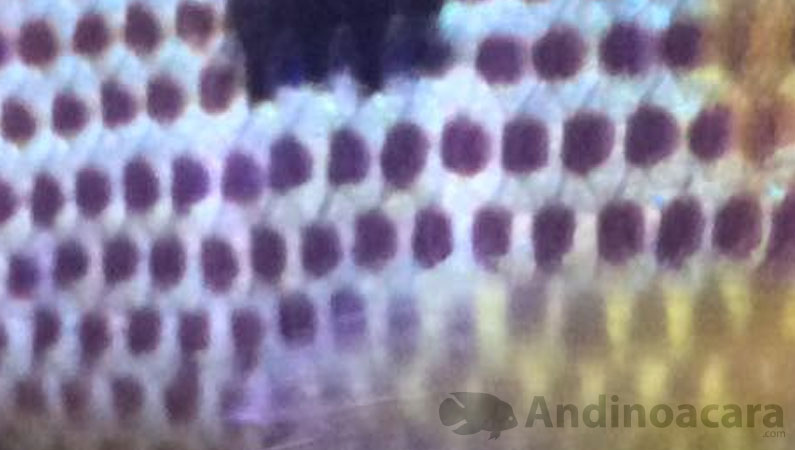
A lighter blue/green edge with a dark center
Andinoacara pulcher - Blue Acara
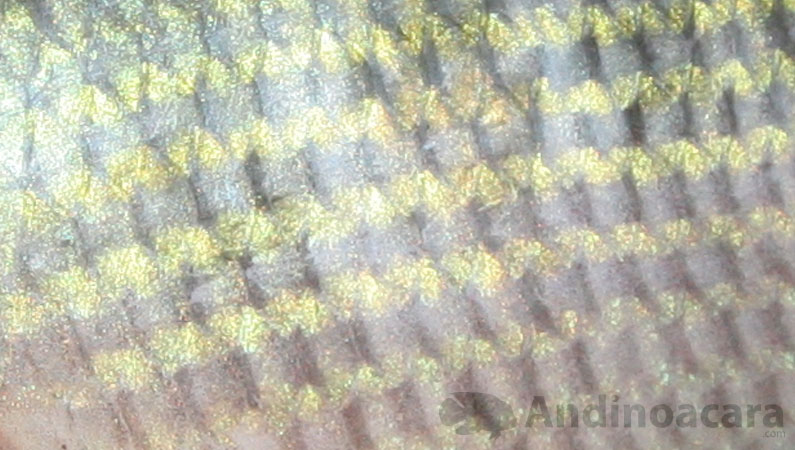
A light coloured scale, which becomes dark at the baring only
The Hybrid
Andinoacara cf. pulcher × Andinoacara rivulatus - hybird
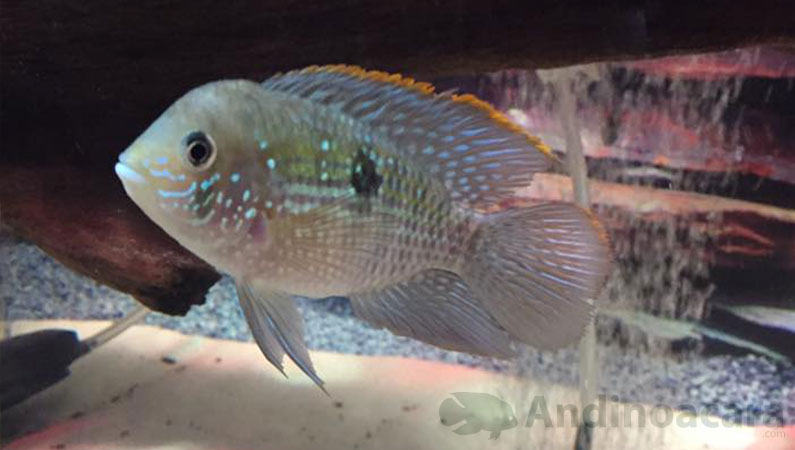
You can see from the photograph above, this fish has the markings of both its parents, Andinoacara rivulatus and Andinoacara cf. pulcher. The orange seam on dorsal is not that thick, but the scales have a light green edge and a darker center, the caudal (tail) fin has the start to an orange seam as well. The fish also displays barring which is not present in a pure Andinoacara rivulatus, unless in breeding condition and then the barring is different to that seen here.
It is hard when you first look at these fish to decide if it is a hybrid or not, but with time, experience, pratice and our resources we hope you will be able to work it out.

